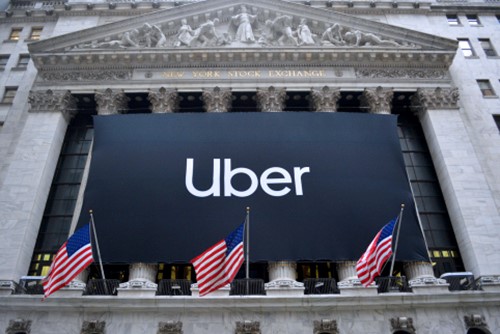Silicon Valley venture capitalist Aileen Lee first coined the word “unicorn” in 2013.
Back then, a unicorn – a privately held company with a value of at least $1 billion – was almost the stuff of myths.
Today, unicorns are running amok across the globe… and dominating the world of initial public offerings (IPOs).
Lyft (Nasdaq: LYFT) started the IPO party in April. Uber (NYSE: UBER) continued it in May, raising some $8.1 billion. Airbnb and WeWork are also in the pipeline.
All this reminds investors of a certain age of the last boom in Silicon Valley, exactly 20 years ago. That era, of course, ended in the dot-com bust.
With user bases of billions across the world, today’s unicorns aren’t the “here today, gone tomorrow” dot-com turkeys of that era… But that won’t keep them from becoming the investment turkeys of today.
The “Blitzscaling” Mindset
The rapid emergence of unicorns in our lives is no accident. Indeed, it is the very deliberate result of Silicon Valley’s investment philosophy du jour.
This was explained to me by LinkedIn founder Reid Hoffman while he was pitching his new book Blitzscaling: The Lightning-Fast Path to Building Massively Valuable Companies in London. (I had briefly crossed paths with Reid at Stanford many years ago where he was studying philosophy.)
Blitzscaling is a “winner takes all” approach to markets. It’s the strategy of conducting a high-speed land grab to dominate a market completely.
Think of it as trying to build the Google of an industry almost overnight – using piles of venture capital to accelerate the process.
Today’s tech investing has become all about applying this magic formula to as many industries as possible. As Hoffman put it, “In a connected world, someone will build an Amazon. The only question is who and how.”
The Fertile Fields of Silicon Valley
It’s no accident that the blitzscaling philosophy found fertile soil in the former orange groves of Silicon Valley.
Until the dot-com boom of the 1990s, the entrepreneurs of Silicon Valley were more like small-time artisans. They operated in the tradition of Hewlett and Packard… and Jobs and Wozniak, who each started by tinkering in small garages in Palo Alto.
In contrast, today’s unicorns are “anointed” by the area’s venture capitalists. Founders are like lottery ticket winners, scrambling to put billions to work in plush new offices with grand views of San Francisco Bay.
The difference in scale is massive.
Before its IPO in 1997, Amazon had raised a mere $10 million. By the time Uber made it to market 22 years later, it had secured more than $24 billion in private financing.
And Uber isn’t the only one. In 2018 alone, venture capitalists financed more than 120 rounds of more than $100 million.
But there’s another, less understood reason for venture capital’s embracing of unicorns. Call it FOMO, or “fear of missing out.”
Venture capitalists know that among the hundreds of deals they invest in, the very few Ubers and Twitters will account for almost all their profits.
In short, they cannot afford not to place a bet.
The Fly in the Ointment
The unicorn phenomenon has one big fly in the ointment.
Yes, the services unicorns provide have disrupted dozens of industries. But that alone does not make them good investments.
Most unicorns are bleeding money. Every Uber ride you take is cheaper than it should be because Uber wants you hooked. Collectively, the top 12 unicorns have put more than $20 billion in consumers’ pockets.
But with no profits, there is no operational leverage or economies of scale to kick in.
The Economist has estimated that the 12 top unicorns that have listed (or are likely to) posted combined losses of $14 billion last year. In total, they have lost $47 billion.
Jay Ritter of the University of Florida calculates that 84% of companies pursuing IPOs have no profits. That percentage hasn’t been this high since the peak of the dot-com boom in 2000.
The future for unicorns doesn’t look much brighter…
Most unicorns have no “moat” against competitors. There are lots of alternatives to Uber. As a result, firms cannot raise prices. They are in constant fear of losing customers. And they are scrambling to create additional services to squeeze out profits.
Throw in the regulatory backlash against the entire tech sector, and the path to profitability becomes even murkier.
Don’t Invest in Unicorns
Every venture capitalist – and public investor – is looking for the next Google.
Google’s stock set the standard by almost quadrupling in value in the year after it listed.
But at today’s lofty valuations – and with an unclear path to profitability – not even the biggest bull expects Uber to replicate Google’s success.
The bottom line?
Unicorns are more a symptom of easy money in Silicon Valley than of the unique insights of blitzscaling.
The financial spigots will one day close. And the world will witness many of today’s unicorns quietly go extinct.
Good investing,
Nicholas
P.S. I’m currently reading Reid Hoffman’s book Blitzscaling, which outlines Silicon Valley investors’ approach to investing today. I suspect it’s not an approach that will survive the next bust.
